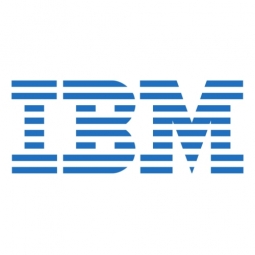下载PDF
A North American airline finds new ways to keep customer satisfaction high
技术
- 应用基础设施与中间件 - API 集成与管理
- 应用基础设施与中间件 - 数据交换与集成
- 应用基础设施与中间件 - 中间件、SDK 和库
适用行业
- 航天
适用功能
- 销售与市场营销
挑战
这家北美航空公司希望通过向客户发送个性化、规则生成的电子邮件或短信来扩展其周到的客户服务,特别是在航班取消或延误期间。该公司的主要重点是提供卓越的客户体验,无论是亲自与客户互动还是使用技术来改善他们的旅行。该公司不遗余力地推广无压力的体验。它这样做的方法之一是使用通知系统通过电子邮件、语音邮件或短信等首选渠道联系客户。它会在起飞前三天提供航班提醒,提前 24 小时在线办理登机手续的机会,并及时通知任何变化,包括航班取消或延误、登机口变更或飞机上提供的娱乐或便利设施的相关信息。
关于客户
这家北美航空公司承诺以低成本提供高水平服务,于 1996 年推出服务时只有三架飞机。现在,它拥有 100 多架飞机,每天搭载 50,000 名乘客,有 450 多个航班飞往北美、中美洲和加勒比地区的 85 个目的地。该航空公司的主要重点之一是提供卓越的客户体验,无论是在前线与他们面对面互动,还是使用技术来改善他们的旅行。该公司不遗余力地推广无压力的体验。
解决方案
通知系统的关键在于 IBM WebSphere 软件支持许多不同信息资源之间的无缝交互。例如,登机口变更会触发存储在我们的消息主干 IBM® WebSphere® MQ 上的消息。该消息通过 IBM Operational Decision Manager 中的规则引擎运行,IBM Integration Bus (WebSphere Message Broker) 在多个系统(包括身份数据库)之间提供编排层。IBM Tivoli® Directory Integrator 查找每位客人的偏好,IBM WebSphere DataPower® 帮助保护、集中和优化对内部和外部 Web、移动和 API 工作负载的访问,以使系统正常运行。通知生成速度很快。事件可能会触发 10 到 390 条规则,具体取决于航班是否有多条航程。当需要更改规则时,系统非常灵活。
运营影响
数量效益
相关案例.

Case Study
Airbus Soars with Wearable Technology
Building an Airbus aircraft involves complex manufacturing processes consisting of thousands of moving parts. Speed and accuracy are critical to business and competitive advantage. Improvements in both would have high impact on Airbus’ bottom line. Airbus wanted to help operators reduce the complexity of assembling cabin seats and decrease the time required to complete this task.

Case Study
Aircraft Predictive Maintenance and Workflow Optimization
First, aircraft manufacturer have trouble monitoring the health of aircraft systems with health prognostics and deliver predictive maintenance insights. Second, aircraft manufacturer wants a solution that can provide an in-context advisory and align job assignments to match technician experience and expertise.

Case Study
Aerospace & Defense Case Study Airbus
For the development of its new wide-body aircraft, Airbus needed to ensure quality and consistency across all internal and external stakeholders. Airbus had many challenges including a very aggressive development schedule and the need to ramp up production quickly to satisfy their delivery commitments. The lack of communication extended design time and introduced errors that drove up costs.

Case Study
Developing Smart Tools for the Airbus Factory
Manufacturing and assembly of aircraft, which involves tens of thousands of steps that must be followed by the operators, and a single mistake in the process could cost hundreds of thousands of dollars to fix, makes the room for error very small.

Case Study
Accelerate Production for Spirit AeroSystems
The manufacture and assembly of massive fuselage assemblies and other large structures generates a river of data. In fact, the bill of materials for a single fuselage alone can be millions of rows of data. In-house production processes and testing, as well as other manufacturers and customers created data flows that overwhelmed previous processes and information systems. Spirit’s customer base had grown substantially since their 2005 divestiture from Boeing, resulting in a $41 billion backlog of orders to fill. To address this backlog, meet increased customer demands and minimize additional capital investment, the company needed a way to improve throughput in the existing operational footprint. Spirit had a requirement from customers to increase fuselage production by 30%. To accomplish this goal, Spirit needed real-time information on its value chain and workflow. However, the two terabytes of data being pulled from their SAP ECC was unmanageable and overloaded their business warehouse. It had become time-consuming and difficult to pull aggregate data, disaggregate it for the needed information and then reassemble to create a report. During the 6-8 hours it took to build a report, another work shift (they run three per day) would have already taken place, thus the report content was out-of-date before it was ever delivered. As a result, supervisors often had to rely on manual efforts to provide charts, reports and analysis.






